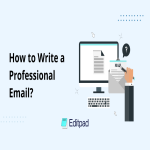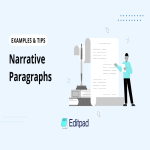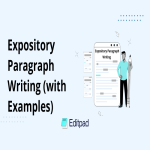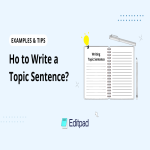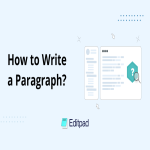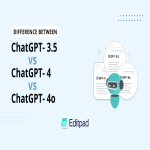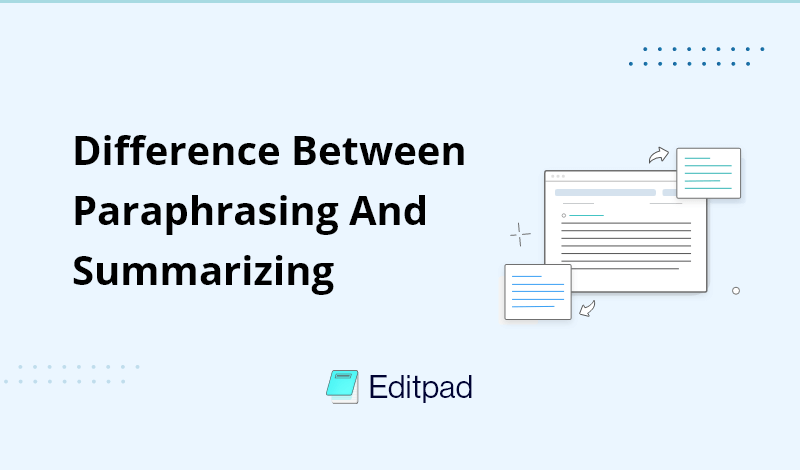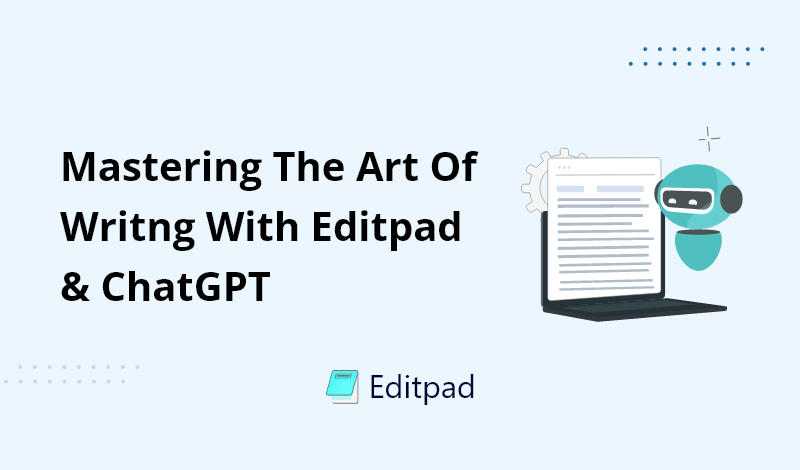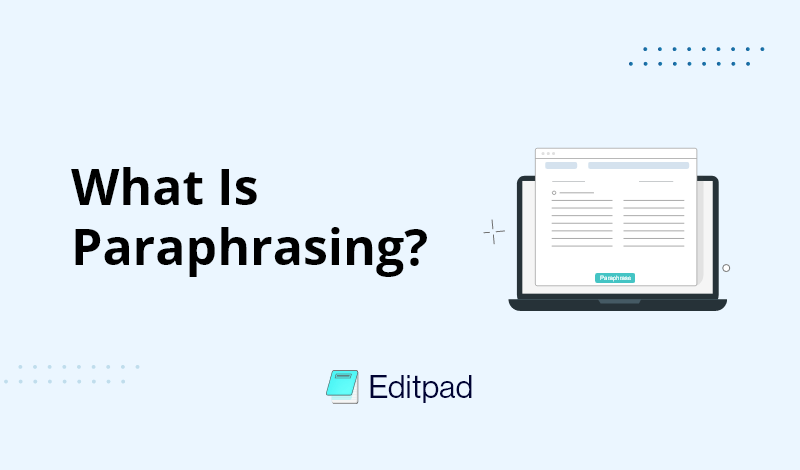ChatGPT is the talk of the town nowadays. According to sources, ChatGPT garnered around 100 million users in its first 60 days—nowadays, it stands at 13 million. So, what has caused ChatGPT’s popularity? As the name suggests, it’s an AI bot that works on the GPT model.
Albeit trained in a 2021 model, it can present information quite seamlessly, which is why many people have jumped on this train. But does that impact writers? The simple answer is yes, it does.
Whether it impacts them positively or negatively depends entirely on the writer. That’s why, today, we’re looking at another key factor: assisting your writing with the help of ChatGPT.
However, you can’t use it alone, and you’re going to need assistance from other tools, such as Editpad. So, let’s dive right in and understand how you can master the art of writing with ChatGPT and Editpad.
ChatGPT is an online chatbot and language model trained by OpenAI in GPT-3.5 and GPT4 autoregressive language models. The purpose of this AI chatbot is to answer questions and queries asked by users—the same way how you’d use a search engine.
However, that’s where the similarities between search engines and ChatGPT end, as it provides detailed information Besides that, it also works based on prompts, which allow users to:
Therefore, ChatGPT has become quite a popular tool to play around with and gather important information, conduct research, etc.
Editpad is an online toolkit that has an array of options for writers. From checking for grammatical issues to finding plagiarism, Editpad has an exclusive collection of tools aimed to help writers in various writing procedures. For instance:
While it’s mainly an online simple and rich text editor, Editpad also offers a text summarizer—besides all the tools mentioned above. These factors make it an all-around toolkit for writers today.
ChatGPT can help you write from scratch, or it can help you find information that you need to write yourself. However, the way it impacts your writing depends entirely on you. Because you can use ChatGPT in three main ways:
That’s why the impact of ChatGPT in writing relies solely on how a writer assumes to use it.
Introductions aside, let’s talk about the topic at hand. So, the question now is; how do ChatGPT and Editpad go hand-in-hand to help you master the art of writing? Let’s start by generating something in ChatGPT.
Let’s say we need a 200-word intro for our marketing blog. So, let’s prompt ChatGPT and see what we get:

As you can see, ChatGPT took like 10 seconds to provide us with a blog intro. Now, let’s put it through various quality tests and see how Editpad can assist you.
The AI-generated content is great, but it’s also putting writers at risk. A lot of novice writers who haven’t been in writing too long make this mistake and pass the AI content along as it is. There are some tools called AI content detectors.
These tools can easily detect whether the text was written by a human or a bot. One such tool is Editpad’s AI Content Detector, so let’s scan our content through it first:
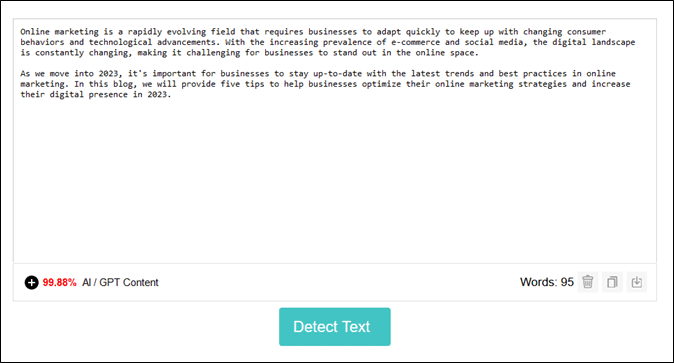
You see an unacceptable case of AI-generated text towards the bottom side of the panel. That’s where Editpad’s Paraphrasing Tool comes into play. Now, let’s paraphrase this text using the paraphraser on Editpad:

As you can see, we have paraphrased the text; now let’s put it through AI-content detection once more:
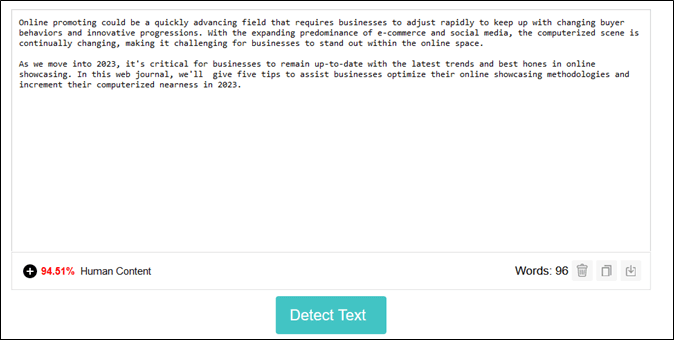
As you can see, it has gone from 99.88% to 94%. Now, what we can do is pass it along as it is or paraphrase it once more. And, when we paraphrase it again, here’s what we get:
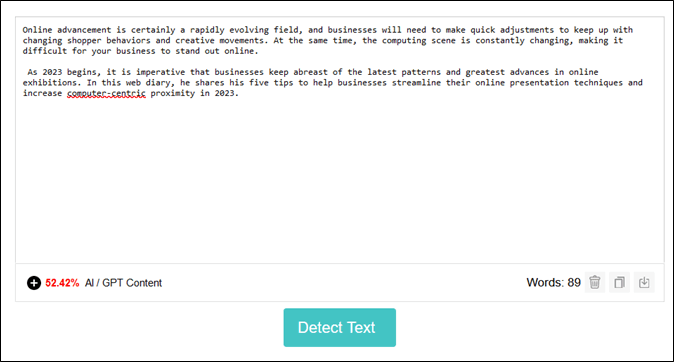
As you can see, it allows you to remove half of the AI-generated text in a few clicks. So, how did this happen? Here’s what AI-content detectors look for:
Now, when we used Editpad’s paraphrasing tool, it made it more human-like. It used more common words and shifted into a tone that’s more akin to writing by a human rather than a machine. Therefore, Editpad’s paraphrasing is a necessary extension for you if you ever use ChatGPT to generate text like this.
In terms of English language and spelling, AI is a lot cleverer than you and I. It is, after all, trained in GPT-4, which is modeled through 170 trillion machine-learning parameters. However, you are better safe than sorry, so you can use Editpad’s Grammar Checker to see if there are any issues with spelling, like so:
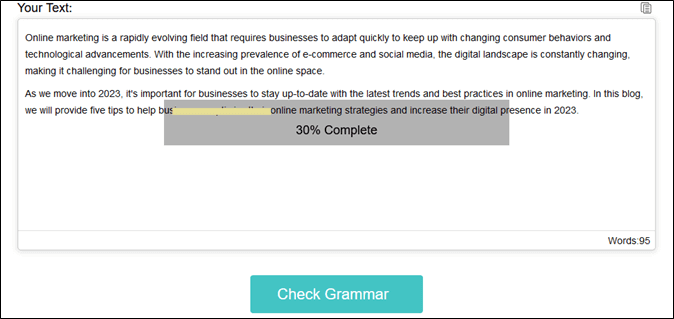
And once the check is done, here’s what we get:

The result is; absolutely no errors. However, doing this is far better than passing your assignment, blog, or any written work along without checking. What exactly will this help with? Here’s what:
Once again, this proves that using a AI grammar checker is ideal for any content—particularly the one not written by you.
Summaries are a necessary and essential factor in online or academic writing. Therefore, it’s imperative to summarize the text that you write, and that’s when Editpad’s Text Summarizer can be a viable tool to use alongside ChatGPT.
When we prompted ChatGPT to write around 200 words for us, it went a little overboard. In other words, we didn’t exactly need this much for an intro:
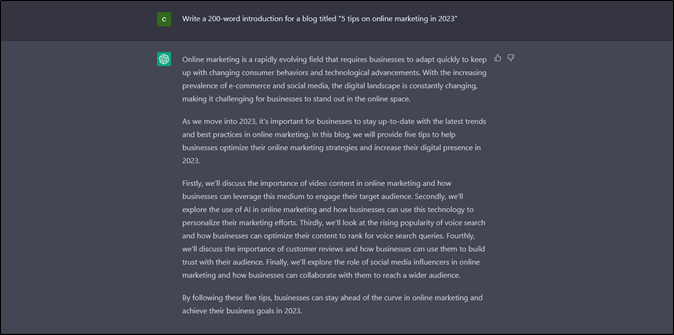
All this text gives us ample opportunity to show you how summarizing can be made easy with a proper summarizing tool. So, let’s say you have generated around 1000 words in different prompts. Then, here’s how you can generate a summary with Editpad’s Text Summarizer:
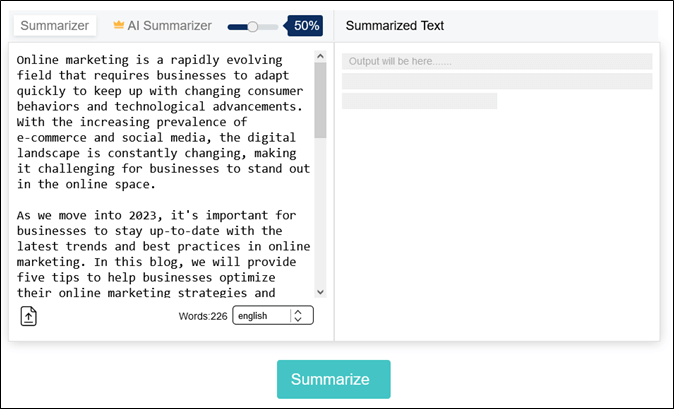
Now, let’s say we want half of that intro, so 100 words or so. Let’s put the AI Summarizer bar to 50% and prompt it to summarize:

Now, the 50% summary is at around 110 words, so less than half of the original 226 words. However, if you need a blog summary or summary for academic content, you’ll need it to be around 200-300 words max. So, we can put the summarizer bar to around 25% and summarize the text:
.png)
And now the text is less than 40 words. Therefore, you can use the summarizing tool with ChatGPT for:
There are many people who wonder if AI generates content by taking chunks of it from other databases, websites, blogs, etc. It does take information from the internet, as it is trained in the GPT-3.5 and GPT-4 models. But it rewrites it using its own words.
So, is there a chance of plagiarism in ChatGPT content? Let’s check it out with Editpad’s Plagiarism Checker:
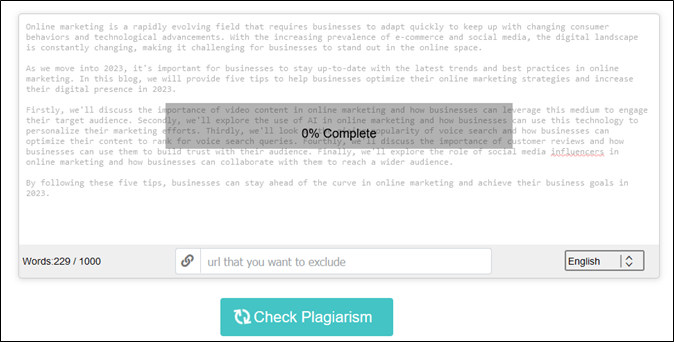
And once the scan is over, the plagiarism tool presents the report:
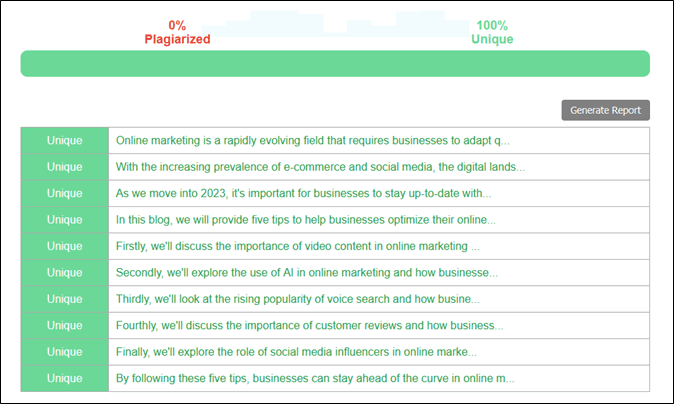
As you can see, the Editpad plagiarism checker helps us confirm that ChatGPT content is usually safe from plagiarism. However, once again, you are safer using a plagiarism checker, and here’s why:
So, using a plagiarism checker is better after generating ChatGPT content than not using it at all.
These are some of the key factors that can help you master the art of writing with the help of ChatGPT and Editpad. Therefore, make sure you are using ChatGPT responsibly and not letting it do your job. Treat it as an extension, and use Editpad to help you become the master of writing, regardless of the kind of text you write.
